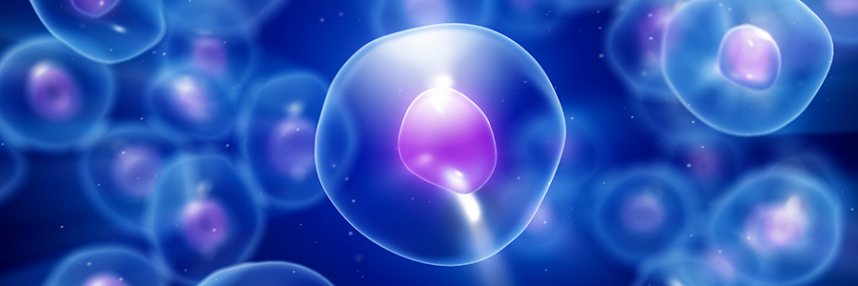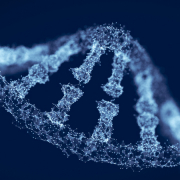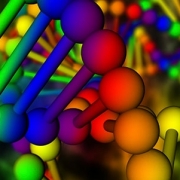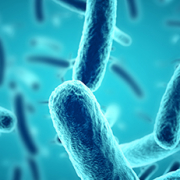The life of a cell
From the 17th century to the latest Nobel Prize winner – could we now be closer than ever in our understanding of the building blocks of all life?
The ability to examine the body at cellular level has come a long way since the 1600s. Further developments in the field over the past 30 years have been significant with the help of genomics and ground-breaking research, leading us to present day and the latest winner of the Noble Prize for Medicine. “It feels that the scientific excitement of the 17th century is here again”, writes Alain Li Wan Po.
Discovering the ‘cell’
Robert Hooke, generally credited as the first person to report on what cells look like, lived in the shadow of more eminent contemporaries such as Robert Boyle and Christopher Wren. Even today, the London skyline, dominated by St Paul’s Cathedral and his many other buildings, reminds us of Wren, the polymath and architect, whilst Robert Boyle became known as the father of ‘chymistry’.
Wren had produced exquisite drawings of a flea, a louse and a nit for the collection of King Charles II. When the King, a keen advocate of the new science, wanted more of such ‘divine works’ for his collection, Wren (who had other more challenging tasks) recommended his assistant, Robert Hooke. Micrographia was the resulting work which Hooke laid ‘most humbly’ at his ‘Majesties Royal Feet’ in 1665. The work was neither small, nor one to be humble about, as it soon became the reference point for much of subsequent research on the life of the cell.
Hooke wanted his work to be something on which others could build. ‘The truth is, the Science of Nature has been already too long made only a work, of the Brain and the Fancy,’ he said. ‘It is now high time that it should return to the plainness and soundness of Observations on material and obvious things.’ Hooke, however, did not make any comment on the significance of the cell as the basic unit of life as others had done so earlier. Much to the dislike of Aristotle, other Greek philosophers of his era, (two millennia before Hooke) had suggested that, unlike his theory of seamless continuity, all matter were made of discrete subunits (atoms, corpuscles, or cells in the new terminology).
Cell theory of life
After many years of continued fancy thinking and three centuries after Hooke, French and German researchers put forward the coherent ‘Cell theory’ now held as validated truth: that all living organisms are made up of cells. According to François-Vincent Raspail, Theodor Schwann and Rudolf Virchow in the first half of the nineteenth century, ‘Every cell is derived from another cell’ and given ‘an organic vesicle endowed with life’ the ‘whole of the organised world’ could be reconstructed.
Hooke regarded his work as foundational, and had lofty ambitions for his followers, noting: ‘It is the great prerogative of Mankind above other Creatures, that we are not only able to behold the works of Nature, or barely to sustain our lives by them, but we have also the power of considering, comparing, altering, assisting, and improving them to various uses.’
The rise of genomics
Many took up Hooke’s challenge and set out to understand the cell, to compare different cells and even to improve them. Out of this endeavour in cell biology came useful applications; progress in the past few decades has been particularly astounding with the rise of genomics.
It became increasingly clear that cancer cells were different from their normal counterparts as a result of genetic mutations and loss of control over orderly gene expression. By digging deeper into the molecular mechanisms of cell growth and cell differentiation, therapies which target specific abnormalities have become available changing the prognosis of at least some cancers markedly. Through the study of disturbances of gene expression not involving alterations in DNA sequence (epigenetics), it became possible to return renegade cells to normal behaviour and cure or stabilise disease although the re-education and reprogramming may not always succeed as in the wider theatre of human life.
The cell is as complex a chemical factory as can be imagined. Proteins that are produced need to be quality controlled, and modified for transport to specific areas of the cell to serve such diverse roles as receptors, transporters, ion channels and signal transducers. Defective proteins need to be detected and disposed of. Failure of any of those operators may lead to diseases such as cystic fibrosis, Alzheimer’s disease and Parkinson disease. If the quality control or production system of the cell becomes defective or aged beyond proper function, the cell itself needs to trigger its own destruction.
Understanding such inner working of the cell have led to innovative modern drugs such as proteasome inhibitors and molecular chaperones and scaffolds.
Nobel recognition
A number of the seminal discoveries on the life of the cell have been honoured by the award of Nobel prizes. The latest was on 3 October with the award of the 2016 Nobel Prize in Physiology of Medicine to Yoshinori Ohsumi, whom a fellow cell-biologist described as a humble yeast researcher, for ‘his discoveries of mechanisms for autophagy’, or how the cell eats itself through a well orchestrated sequence, for the benefit of the organism. He did this by studying the genomics of the process; what genes are involved in what steps.
Robert Hooke’s legacy is clearly enormous, but in an age of scientific giants, he was outshone. He was particularly jealous of Isaac Newton, who was happy to flaunt his intellect and avoided Hooke with disdain. Encouraged by Edmond Halley, the mechanics of the heavens which the astronomers were charting became better understood through Newton’s Laws of gravity, leading in turn to accurate predictions of Halley’s comet.
Whilst Newton and the telescope laid the foundation of precision space travel to the moon and beyond, Hooke, the microscope, and Robert Boyle opened the path towards the science of genomics, which allows us to better target the subcellular compartments of the cell to repair or to kill with precision. With work such as Ohsumi’s and current developments in synthetic biology, it feels that the scientific excitement of the 17th century is here again. Some assert that by controlling the life of the cell we may one day be able to cure conditions such as Alzheimer’s disease and even stop ageing.
Here we go again. It’s time to stop this talk of ‘brain and fancy’.
Professor Alain Li Wan Po is editor-in-chief of the Journal of Clinical Pharmacy and Therapeutics, and is a fellow of the Royal Pharmaceutical Society and the Royal Statistical Society.
–









